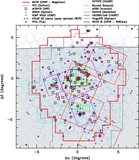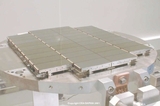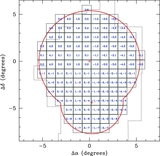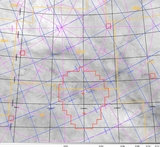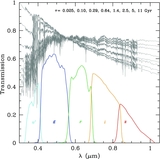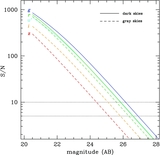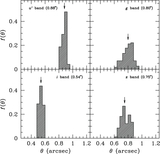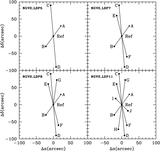Image Details
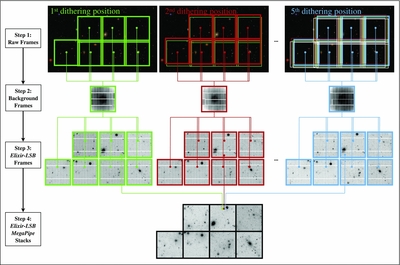
Caption: Figure 10.
Schematic representation of the step-dither strategy adopted for the NGVS, which lies at the core of the Elixir-LSB observing strategy and processing pipeline. A single image is taken for each of seven 1 deg 2 fields, indicated in the top left panel by the green squares superimposed on an SDSS image of the M49 region ("step 1"; note that the fields overlap slightly). These seven images are acquired as an uninterrupted sequence, typically lasting less than 1 hr. Processing through Elixir-LSB combines these frames, rejecting real objects (stars, galaxies, etc.) and produces a single "scattered light" background image ("step 2"). This is then rescaled and subtracted from each of the seven images, producing flat, background-corrected Elixir-LSB frames ("step 3"). The entire sequence is then repeated (sometimes immediately after the first, but typically days or weeks later): The same seven fields are observed again, but this time at a slightly different offset position (corresponding to the second position in the dithering pattern adopted for that particular filter). These new images (identified by the red boxes in the top middle panel) produce a second background frame that is used to correct each exposure for scattered light. Once the last sequence of exposures is obtained (the figure assumes the case of a five-point dithering pattern, and dither positions 3 and 4 are not shown explicitly) and the corresponding frames are processed, all images belonging to the same field are stacked ("step 4"). See Sections 3.5, 4.1, and 4.2 for details.
Copyright and Terms & Conditions
© 2012. The American Astronomical Society. All rights reserved.



